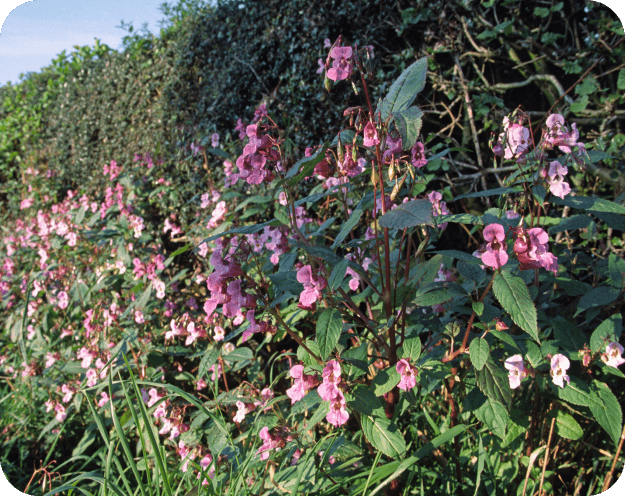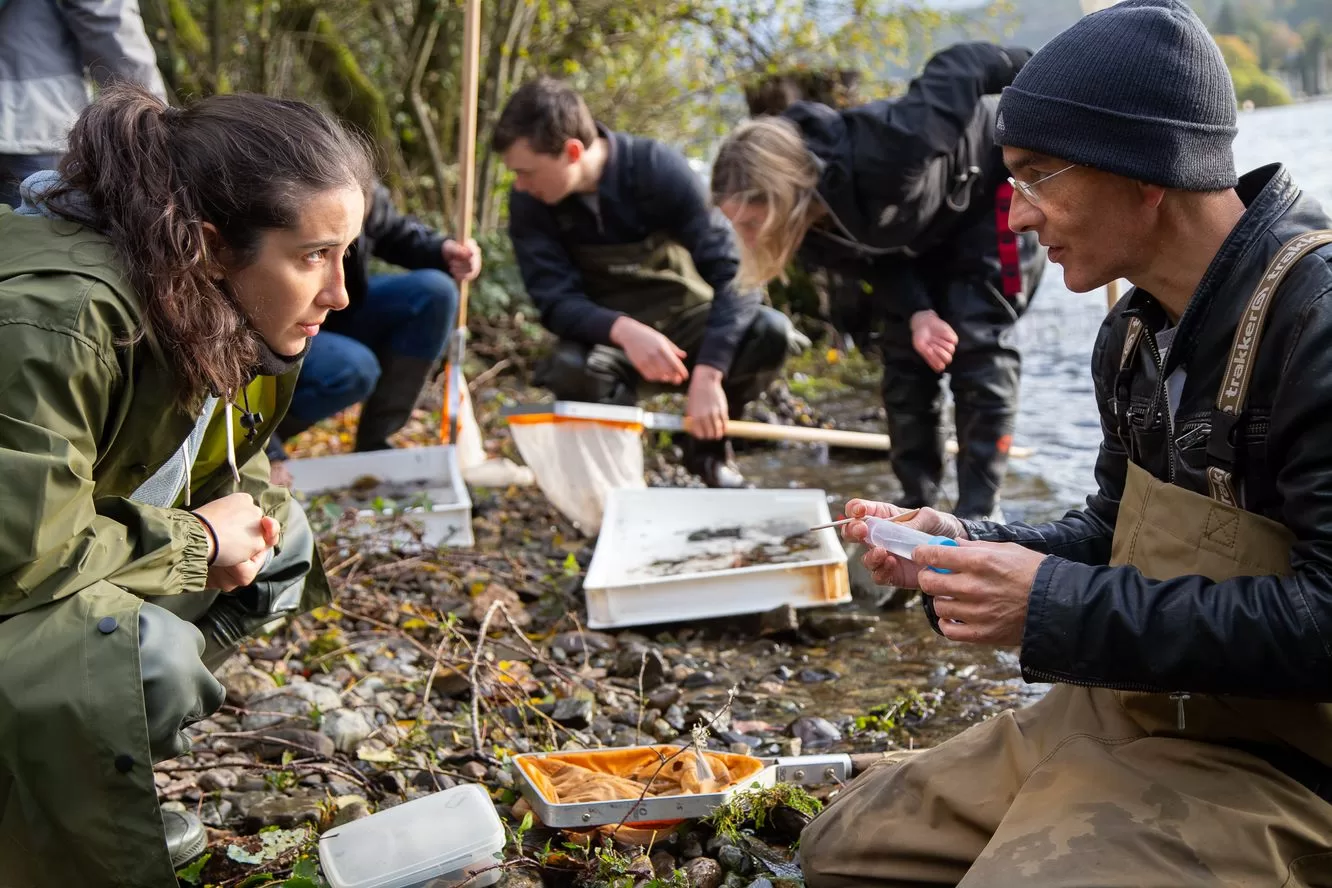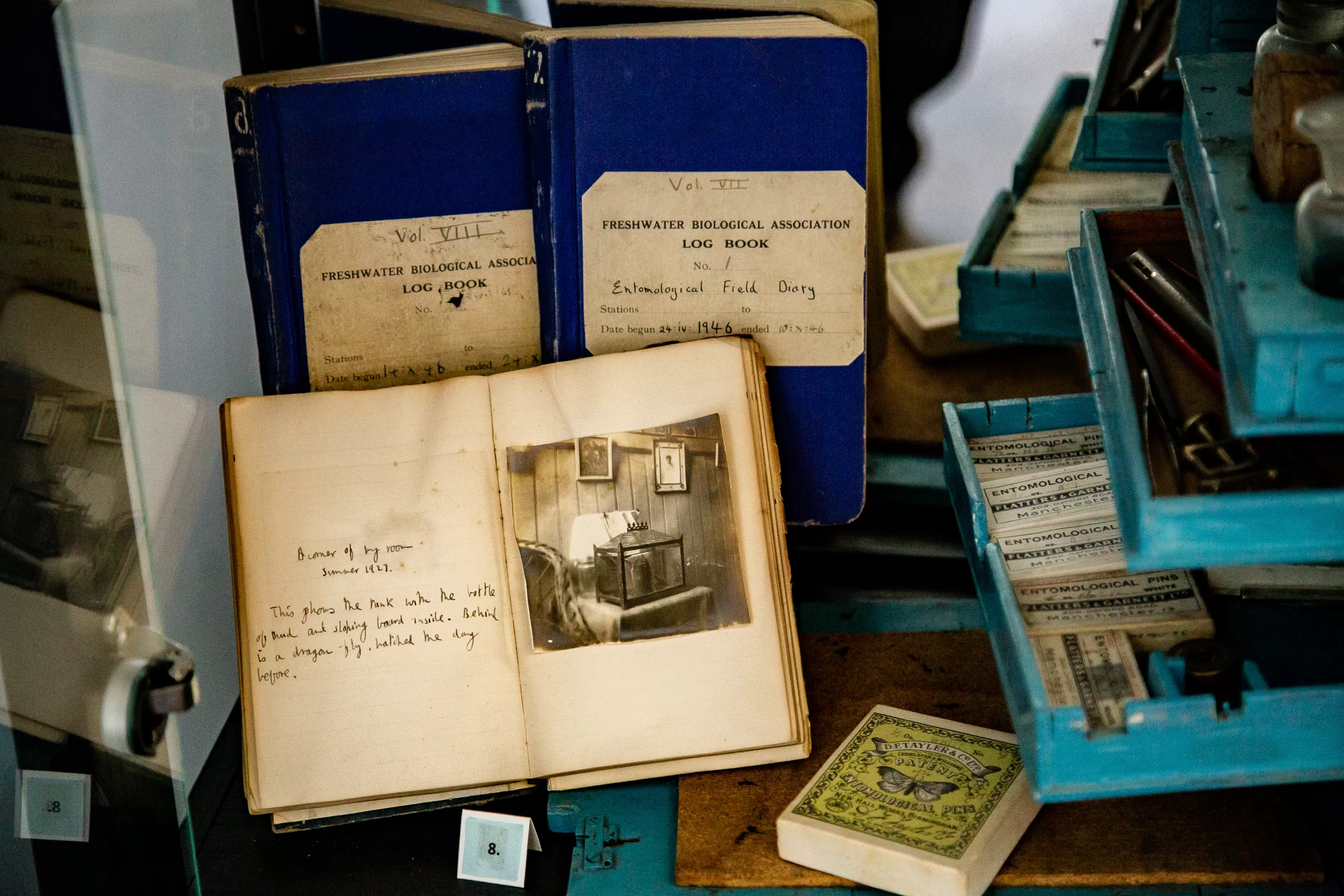Keeping the Kent Clear
A major aim of the project is to establish effective biosecurity measures across the River Kent catchment to ensure the protected site is free from invasive species. Invasive non-native species outcompete local wildlife and can also degrade the natural environment in ecosystems they have not originated in. Watercourses in general suffer more than other habitats, as seeds of invasive plants are easily washed downstream, enabling colonisation of new areas very quickly. Pathogens can stay viable for some time and be moved by accident from one water system to another on any manner of thing – boats, shoes, dogs – you name it.
What are we focussing on?
We have an army of volunteers who join us in annual ‘Balsam Bashing’ days to hand pull Himalayan Balsam – a beautiful plant that is catastrophic for waterways, outcompeting native species and leaving banks bare during winter months allowing for erosion and sediment input.
We will be removing 20km of invasive plants over the course of the project and, if you want to join in, just get in touch!
We are also identifying and establishing ‘Ark sites’ for our native white-clawed crayfish. Currently, the River Kent system is free from invasive American signal crayfish and crayfish plague, but it is present in a neighbouring catchment. As such, we want to ensure there are Ark sites – safe havens for the native white-clawed crayfish if, in the future, there is a contamination from another catchment.
Given how easy it is for waterborne species to be transferred and that, in the majority of cases, it is unintentional and often by the people who use and love the water the most, another part of our biosecurity work is a community outreach programme. This is to raise awareness amongst groups using the water, such as boaters, anglers, wild water swimmers and even our contractors. We will build on spreading the message: “Check. Clean. Dry.” For more information on invasive non-native species #INNS and biosecurity, See our Resources page for more info.

Other project links

Aims

Research


